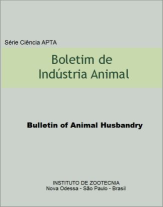Silvopastoral system with macauba palm: alternative to sustainable livestock production
Palavras-chave:
global warming, bioeconomics, public policyResumo
The agriculture of the future should have less dependence on agrochemicals, inputs and water, make less use of machines and plowing the land and contribute to mitigation of greenhouse gases. This is the path of sustainability that guides the agenda of heads of state of the world's most important countries in meetings where goals of reducing CO2 emissions are agreed upon. The Brazilian commitment assumed at COP21 is to reduce CO2 emissions by 37% by 2035. Agriculture plays a fundamental role in this difficult mission. Greenhouse gas emissions from agriculture, forestry and fishing have almost doubled over the last 50 years and by 2050 this volume is expected to grow by 30% if the sector's expansion is not reduced, according to the FAO report published on 11/04 of 2014. Part of the solutions to greenhouse gas mitigation converge both to reduce emissions and to sequester excess CO2. Thus, an important contribution to this sustainability is in the cultivation of forests, given that the annual amount of carbon captured by the trees is, on average, 1 ton for every 6 trees planted, according to calculation by the Brazilian Forest Institute. Considering the size of the area occupied and the socioeconomic importance of livestock farming in the country, the adoption of silvopastoral systems is in line with the sustainable agriculture we seek to develop. Thus, we present the macaúba palm, native species, pioneer and widely found throughout the south-central region of the country as an important option for consortium with pastures. Two types of oil can be extracted from macaúba: fine, extracted from the almond, with potential for noble use in the food, pharmaceutical and cosmetic industries; and pulp oil, with up to 80% oleic acid in its composition, which guarantees it special interest in food and biodiesel. The macaúba (Acrocomia spp.) can be included in the silvopastoral models with Brachiaria decumbens, in the densification of up to 357 plants/macaúba/ha (7x4m) without detriment to the nutritional quality and the photosynthetic and growth yields at similar levels to the monoculture brachiaria. In addition, it acts as an efficient atmospheric carbon sequestrator, offering ideal conditions for rest, leisure and animal rumination. The macaúba grassland consortium avoids erosion, improves soil chemical and CTC quality, increasing its organic fraction and microbial biomass. With this density per hectare, we estimate a production of 28 tons of fruits.ano-1, which can yield 2 to 3 tons of oil from the pulp and 0.8 tons of oil from the almond. The pie produced from the processing of pulp (7.5 tons) and almond (0.5 ton), as well as fruit peel (7.5 tons) can be used for animal feed. The pulp cake can contain up to 8.5% protein, 57% fiber and 8% lignin, almond up to 50% protein, 64% fiber and 22% lignin and the shell contains 3% protein, 45% fiber and up to 29% lignin, co-products for ruminant and non-ruminant feed. Therefore, the macaúba palm presents bioeconomic value capable of contributing to an agriculture of the future, reconciling innovation and environmental sustainability.
Downloads
Downloads
Publicado
Edição
Seção
Licença
Os autores não serão remunerados pela publicação de trabalhos, pois devem abrir mão de seus direitos autorais em favor deste periódico. Por outro lado, os autores ficam autorizados a publicar seus artigos, simultaneamente, em repositórios da instituição de sua origem, desde que citada a fonte da publicação original seja Boletim de Indústria Animal. A revista se reserva o direito de efetuar, nos originais, alterações de ordem normativa, ortográfica e gramatical, com vistas a manter o padrão culto da língua e a credibilidade do veículo. Respeitará, no entanto, o estilo de escrever dos autores. Alterações, correções ou sugestões de ordem conceitual serão encaminhadas aos autores, quando necessário. Nesses casos, os artigos, depois de adequados, deverão ser submetidos a nova apreciação. As opiniões emitidas pelos autores dos artigos são de sua exclusiva responsabilidade. Todo o conteúdo deste periódico, exceto onde está identificado, está licenciado sob a Licença Creative Commons Attribution (CC-BY-NC). A condição BY implica que os licenciados podem copiar, distribuir, exibir e executar a obra e fazer trabalhos derivados com base em que só se dão o autor ou licenciante os créditos na forma especificada por estes. A cláusula NC significa que os licenciados podem copiar, distribuir, exibir e executar a obra e fazer trabalhos derivados com base apenas para fins não comerciais.













